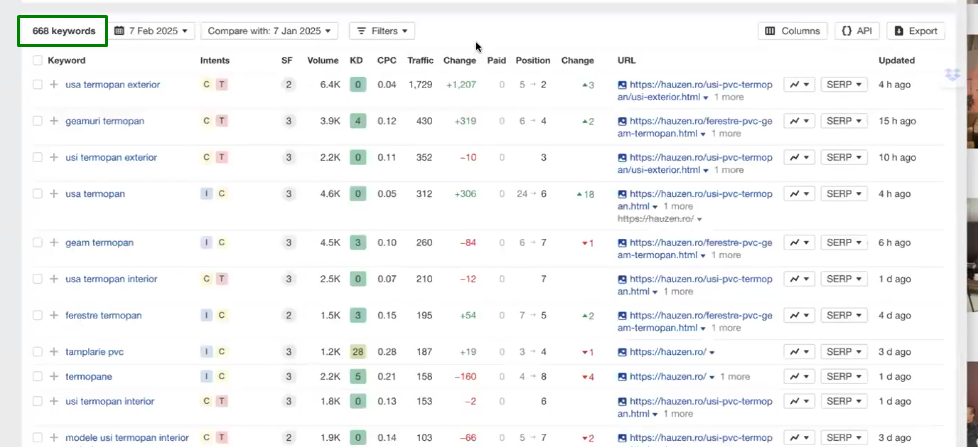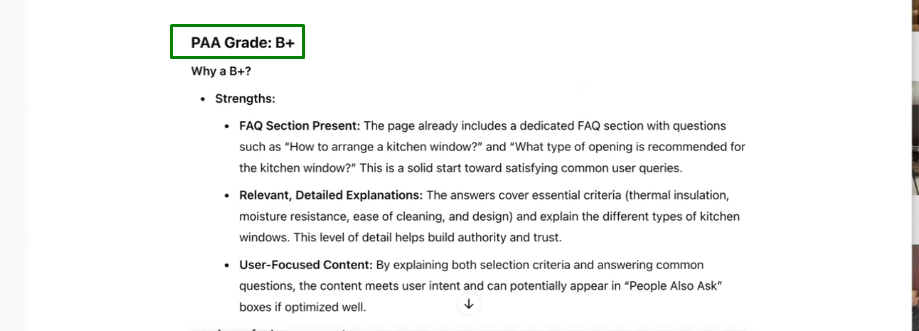
I joined GPeC Winter School virtually to lead a live SEO session for Romanian e-commerce brands. This wasn’t just another webinar. It was a hands-on working session with founders and marketers applying real frameworks—no fluff, no vague theory.
Andrei Radu, who started GPeC, first invited me to speak in 2019 at the GPeC SUMMIT in Bucharest—my first-ever talk in Romania.
He personally wrote the announcement and welcomed me on stage in front of a packed room of local entrepreneurs. As he put it at the time:
“Dennis Yu is speaking for the first time in Romania at GPeC SUMMIT on May 27-28, where he’ll teach you how to grow your online business through Facebook.”
That experience kicked off our relationship. Since then, we’ve collaborated on SEO boot camps, spoken together in Cluj, and stayed in close contact.
Andrei is more than an event organizer—he’s a builder of communities, always attracting people who execute rather than just talk.
At this year’s Winter School, Ioana, who helps lead GPeC’s operations, made sure everything ran smoothly behind the scenes—so every attendee got personalized feedback and walked away with a clear roadmap.
Andrei Radu joined the session as well and shared this afterward: “Thank you so much for joining us today at GPeC Winter School – I attended the first hour of your session and it was a very practical approach – congrats!”
Why GPeC Winter School Is Different
- About 40 attendees, mostly e-commerce founders.
- Explores real websites—not hypothetical examples.
- Live EEAT scoring using ChatGPT, based on Google’s guidelines.
This event wasn’t about theory. Attendees came with real challenges and left with specific plans. I worked directly inside their Ahrefs dashboards, generated blog outlines live with ChatGPT, and customized SEO strategies on the spot.
Three Brands, Three Content Factory Wins
I ran live SEO audits using Ahrefs and ChatGPT tools. Here’s how we applied the framework in real time:
- Pulled top-ranking keywords and underperforming content.
- Evaluated EEAT factors and PAA (People Also Ask) opportunities.
- Identified content gaps and schema issues.
- Suggested new blog and product page structures.
1. Gameology.ro — Julia’s Board Game Store
Julia, the founder of Gameology.ro, distributes translated adult board games. Her site ranked on over 2,000 keywords, but most traffic came from a single product category page focused on adult games.

We reviewed her Ahrefs data to analyze performance and keyword coverage.
Our ChatGPT article grader, graded her page for EEAT—earning a C for Experience. It lacked content types that demonstrated usage: reviews, testimonials, and media showing people engaging with the games.

We identified high-potential keyword clusters she was just short of ranking on and used these to build out an editorial calendar.
We suggested creating content around user experiences, such as “Top Board Games for Couples Night,” and curating quotes from players to create unique product blurbs.
We also recommended bringing the blog back to life and using it to tell behind-the-scenes stories about translating games into Romanian.
“Before AI, we had the best product descriptions in the market,” Julia said. “But now everyone is using AI, and it’s harder to stand out.”
By anchoring her SEO in real-world experience and content only she could produce, she can reclaim that distinctiveness.
2. Hauzen.ro — Custom Doors and Windows
Hauzen.ro sells custom windows and doors. Their audit revealed they ranked on 600+ keywords, with two product pages generating most of the traffic. The top-performing page focused on PVC entrance doors.

We used ChatGPT to audit the PAA and EEAT score—B+ overall—and flag areas to improve. Although the technical product data was sound, the page lacked answers to common buyer questions.
These included: “What type of window is best for insulation?” and “How do I measure for a custom door?”

We also noticed that while the product photos were present, there were no installation examples, no customer testimonials, and minimal information about materials or durability in real-world scenarios.
We recommended adding FAQ schema, creating short video guides, and writing case studies of customer installations, complete with before-and-after photos.
ChatGPT helped generate outlines for blog posts such as “How to Choose the Right Entrance Door for a Cold Climate.”
3. Ploom.ro — Lifestyle Tobacco Brand
Ploom.ro is the Romanian home of Ploom, a heated tobacco brand under Japan Tobacco International. They had strong rankings on branded queries like “Ploom X” and “Soani sticks,” but little traction on broader lifestyle or informational searches.

During the session, I shared a parallel from my work with Jack Daniels. To grow their visibility, I didn’t just talk about whiskey—I highlighted stories of real people and their connection to the brand.
We featured musicians, bartenders, and community members who were part of the brand’s ecosystem. Those stories were then used across social media, PR, and search to create content that resonated and ranked.
The same approach applies to Ploom. SEO success for lifestyle brands comes from surfacing real-world usage and identity—how the product fits into someone’s daily routine or lifestyle choice.
Their Ahrefs audit showed strong domain authority and brand interest, but their blog was underutilized. ChatGPT flagged gaps in Experience and Trust, particularly in explaining how the product compares to others or what the benefits are for different user profiles.
Ploom can build a content strategy around lifestyle use—such as “How Ploom Fits into a Smoke-Free Routine”—and leveraging partnerships with local creators to gather testimonials and product walkthroughs.
ChatGPT also outlined potential article topics including “Most Popular Ploom Flavors in Romania” and “Switching to Heated Tobacco: What You Need to Know.”
Emanuel, representing Ploom, shared: “We’re focused on building Ploom as a premium lifestyle brand. SEO is part of that journey, but it’s also about trust and user connection.”
How We Used AI Without Losing Trust
At GPeC, I showed how AI can be powerful—but only if grounded in real inputs:
- EEAT audits via ChatGPT.
- The blog outlines from keyword clusters.
- FAQs pulled from PAA boxes.
But none of that works if you’re feeding GPT generic inputs. You need actual:
- Photos from customer installs.
- Testimonials in Romanian.
- Screenshots from Google Maps reviews.
We pointed attendees to our Content Factory Guide and showed them examples like:
- Using PAA for SEO.
- Cross-posting for traffic.
- Boosting with Dollar a Day.
Key Takeaways for Romanian E-Commerce Founders
- Don’t start with writing. Start with photos and stories.
- Use AI for structure, not substance.
- Turn FAQs into blog outlines.
- Show experience—don’t just tell.
If you’re in Romania, GPeC is the one place where ecommerce entrepreneurs get actual feedback, not just theory. You walk away with your site audited and your next steps mapped out.
Want help applying this? Start with the Content Factory training. And if you see Andrei or Ioana at the next GPeC event, thank them for keeping it real.
